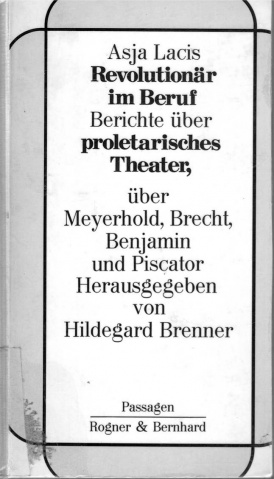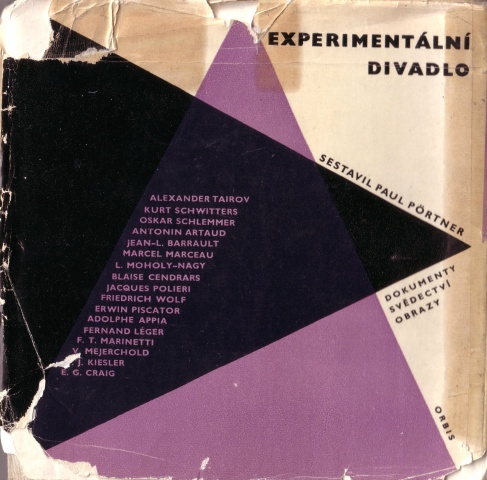Gennifer Weisenfeld: Mavo: Japanese Artists and the Avant-Garde, 1905-1931 (2002)
Filed under book | Tags: · 1910s, 1920s, anarchism, architecture, art history, avant-garde, collage, communism, constructivism, dada, expressionism, futurism, graphic design, japan, marxism, socialism, theatre

“The radical Japanese art group Mavo roared into new arenas and new art forms during the 1920s, with work ranging from performance art to painting, book illustration, and architectural projects. Hurling rocks through glass roofs and displaying their rejected works, Mavo artists held peripatetic protest exhibitions against the Japanese art establishment. Ultimately, Mavo’s work became a major influence in Japanese commercial art and had a pronounced and lasting impact on Japanese visual and political culture. This abundantly illustrated volume, the first book-length study in English on Mavo, provides a critical evaluation of this often outrageous and iconoclastic movement, tracing Mavo’s relationship to broader developments in modernism worldwide.
Gennifer Weisenfeld provides a fascinating look into Japanese popular culture by showing how Mavo artists sought to transform Japanese art in response to the rise of industrialism. They deliberately created images that conveyed the feelings of crisis, peril, and uncertainty that were beginning to characterize daily life. Their art often alluded to mechanical environments through the use of abstracted imagery such as interconnected tubular forms and shapes reminiscent of riveted steel-plate girders. Looking in depth at the art itself, the flamboyant personalities of the artists, and the cultural and political history of Japan in this interwar period, Weisenfeld traces the strategies used by these artists as they sought to reintegrate art into daily experience.
Weisenfeld thoroughly documents the links between Mavo artists and a wide range of other artistic and political movements with which they associated themselves, such as futurism, dada, expressionism, socialism, and communism. Capturing the restlessness and iconoclastic fervor of Mavo, Weisenfeld is the first to fully locate this modern Japanese artistic community within the broader historical and intellectual framework of international art of the early twentieth century.”
Publisher University of California Press, 2002
ISBN 0520223381, 9780520223387
368 pages
Reviews: Patricia Failing (caa.reviews), Alexandra Munroe (J Japanese Studies), J. Keith Vincent (J Asian Studies).
PDF (95 MB, no OCR, updated on 2017-7-17)
multiple formats (Internet Archive, added on 2017-7-17)
See also Weisenfeld’s essay Mavo’s Conscious Constructivism: Art, Individualism, and Daily Life in Interwar Japan (1996, 10 pp) and
Hagiwara Kyōjirō’s Death Sentence (1925).
Asja Lacis: Revolutionär im Beruf, Berichte über proletarisches Theater, über Meyerhold, Brecht, Benjamin und Piscator (1971) [German]
Filed under book | Tags: · 1910s, 1920s, 1930s, avant-garde, experimental theatre, germany, theatre, weimar republic

A memoir of the theatre director, actress and pedagogue Asja Lacis follows her life and theatre work in revolutionary Russia and the Weimar Republic, and offers commentary on work and ideas of avant-garde artists and groups of the time. Lacis was a personal friend and collaborator of Walter Benjamin and Bertolt Brecht (whom she introduced to each other), Erwin Piscator and Bernhard Reich, among others. She was a primary influence in moving Benjamin to the Left. Along with Reich she was also responsible for making Brecht known in the Soviet Union.
Edited by Hildegard Brenner
Publisher Rogner & Bernhard, Munich, 1971
132 pages
via richardb
Review (Patty Lee Parmalee, New German Critique, 1975, in English)
The Writing of Asja Lacis (Susan Ingram, New German Critique, 2002, 19 pp, in English)
Commentary (Susan Ingram, 2003)
PDF (no OCR)
Comment (0)Paul Pörtner (ed.): Experimentální divadlo: přehled, dokumenty, kresby, fotografie (1960/1965) [Czech]
Filed under book | Tags: · art history, avant-garde, experimental art, futurism, history of theatre, theatre

A history and documents of the experimental theatre edited in 1960 by the German playwright, novelist and translator.
“Pörtnerova kniha chce ve stručnosti, mnohdy až lapidární zkratkou, seznámit s výsledky nejdůležitějších pokusů, ktoré vznikly z vědomí neomezených možností moderního scénického prostoru a chtějí zbavit divadlo otrocké závislosti na konvenci a stagnaci, vlastní stávajícímu divadlu.
Výsledky pokusů velikých experimentátorů, mezi nimiž nechybí taková jména jako Appia, Craig, Marceau, Piscator, ale i Léger, Moholy-Nagy, Picasso, svítí nadále jako maják do budoucnosti, neboť jen málo impulsů z jejich bohatého odkazu přešlo do praxe současného divadla.
Ačkoli nelze očekávat, že idea ‘totálního divadla’ ožije v celé plnosti jejich představ, zůstává nicméně naděje, že sebevědomí divadla jako svébytného uměleckého druhu zesílí, že experimenty se specificky divadelními prostředky budou vedeny dále, aby se tak z dílčích událostí stala skutečná divadelní událost, ve které spojí experiment formy s novým obsahem.
Kniha může být cenným podnětem v našem soudobém uměnovedném myšlení a má význam i pro historii předválečného divadla, která má právě v této oblasti mnoho neujasněností a bílých míst.” (from the inside flap)
First published as Experiment Theater. Chronik und Dokumente, Arche, Zürich, 1960
Translated by Jan Rak
Publisher Orbis, Prague, 1965
Volume 4 of Monoskop Unlimited Edition series
176 pages
PDF (66 MB, no OCR)
Comment (0)
